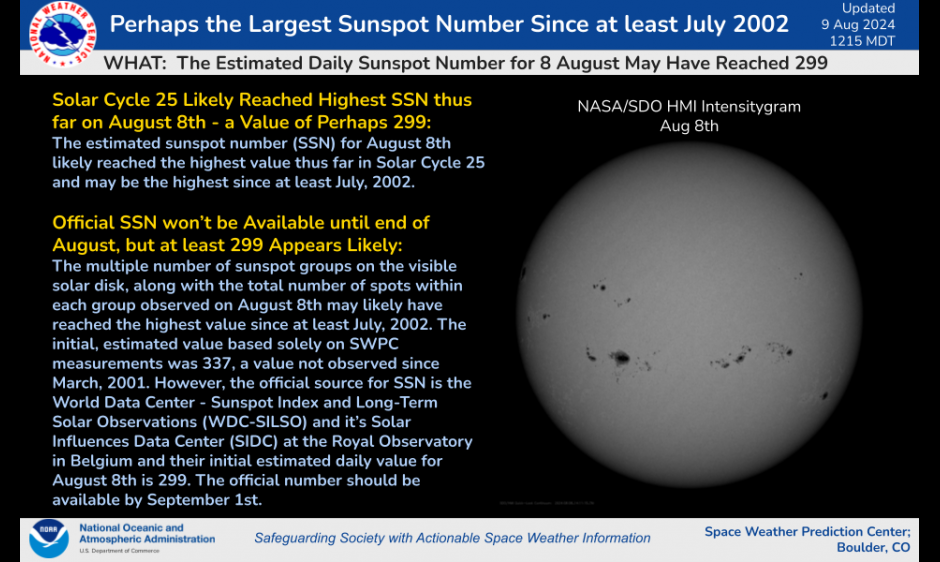
Solar Cycle 25 likely reached the highest sunspot number yet - a value of at least 299. The Space Weather Predicition Center (SWPC) non-official, estimated daily sunspot number for August 8th was 337, a value not observed since March 2001. However, the official SSN is determined by the World Data Center - Sunspot Index and Long-Term Solar Observations (WDC-SILSO) and it's Solar Influences Data Center (SIDC) at the Royal Observatory in Belgium; and their initial daily estimate for August 8th was 299. They will report out the official number by September 1st. Visit their webpage at: https://www.sidc.be/SILSO/home and as always visit our webpage for the latest space weather information and forecasts.